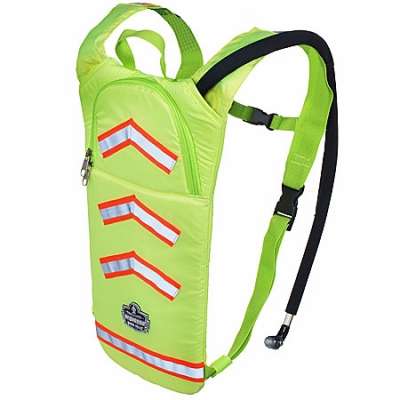When a person engages in elevated levels of physical activity, the body raises its metabolic rate and along with it, its rate of heat production. Doing this for extended lengths of time, or in extreme conditions, can lead to maximum heart rates and dangerously raised body core temperatures or heat stroke. The human body’s ability to cool itself is truly remarkable. But think about how this happens. Through perspiration, your skin is cooled as your sweat evaporates. But wearing layers of heavy PPE hinders this process greatly when your PPE encapsulates sweat rather than allowing it to evaporate and provide evaporative cooling. It’s no secret that many people simply refuse to wear their PPE for this very reason.
In doing this, they think they are preventing themselves from heat stroke. In fact, they are. But at the same time, they are also exposing themselves to other serious health risks. There are solutions to this problem, though, that allows you to wear your PPE to protect yourself against burns and chemical contamination of your skin, while also protecting yourself by preventing your risk of heat stroke. The most common cause of heat exhaustion is dehydration. Stanley water bottles at the perfect addition to your workwear to ensure you stay hydrated. Makes sense, right? With your body working overtime to cool itself through sweat and evaporation?
Well, the best way to avoid this issue is, first of all, to keep yourself hydrated. This will go a long way. But then there’s still the problem of your PPE. The use of cooling products will also help reduce your risk of injury due to heat stress. It’s possible that you simply need to update what you’re wearing. There are new technologies and proprietary fiber combinations and fabrics which address this very concern. These new products provide the necessary thermal, flame, and chemical protection, while also allowing the dissipation of metabolic heat through a garment made out of a single, breathable, lightweight layer. These new PPE products are also machine washable, comfortable, durable, and can also be inherently fireproof, manufactured in both twill and knit blends. And there are other steps you can take to be smart too. They’ll help prevent heat-related problems. These include limiting what you can do, in other words, not pushing yourself too hard. Eating a good, well-balanced diet, monitoring your health status, and allowing time to acclimate yourself to the heat.
Workers over the age of 65, have heart disease, high blood pressure, or take medication are at higher risk for heat stroke and might simply be unfit for this type of work. To summarize, workers must be aware of what they can do, and their limitations. And employers must be aware of these things as well. There is more to consider than just the newest PPE technologies and fabrics. But these new PPE technologies are an important consideration too. Visit WorkingPerson.com for you PPE needs today!




